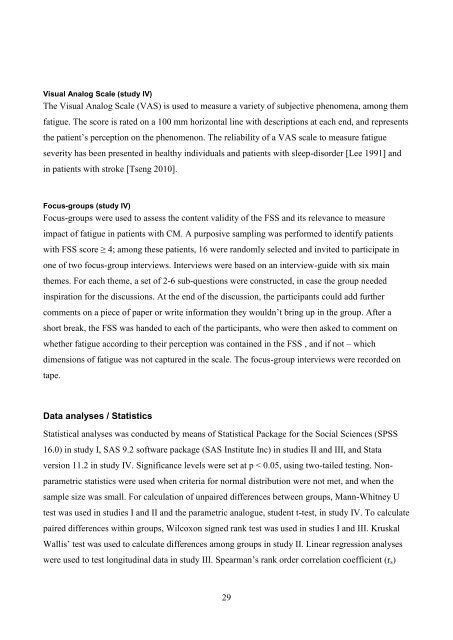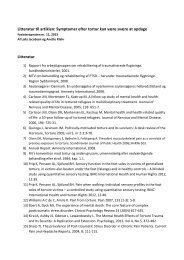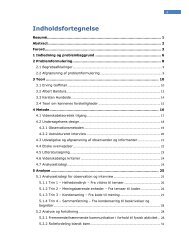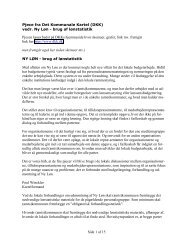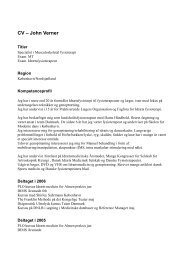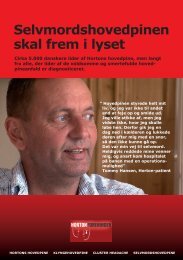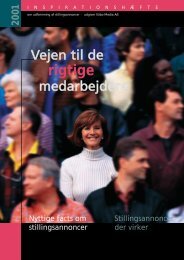Ulla Werlauff Methods to assess physical functioning - Danske ...
Ulla Werlauff Methods to assess physical functioning - Danske ...
Ulla Werlauff Methods to assess physical functioning - Danske ...
You also want an ePaper? Increase the reach of your titles
YUMPU automatically turns print PDFs into web optimized ePapers that Google loves.
Visual Analog Scale (study IV)<br />
The Visual Analog Scale (VAS) is used <strong>to</strong> measure a variety of subjective phenomena, among them<br />
fatigue. The score is rated on a 100 mm horizontal line with descriptions at each end, and represents<br />
the patient’s perception on the phenomenon. The reliability of a VAS scale <strong>to</strong> measure fatigue<br />
severity has been presented in healthy individuals and patients with sleep-disorder [Lee 1991] and<br />
in patients with stroke [Tseng 2010].<br />
Focus-groups (study IV)<br />
Focus-groups were used <strong>to</strong> <strong>assess</strong> the content validity of the FSS and its relevance <strong>to</strong> measure<br />
impact of fatigue in patients with CM. A purposive sampling was performed <strong>to</strong> identify patients<br />
with FSS score ≥ 4; among these patients, 16 were randomly selected and invited <strong>to</strong> participate in<br />
one of two focus-group interviews. Interviews were based on an interview-guide with six main<br />
themes. For each theme, a set of 2-6 sub-questions were constructed, in case the group needed<br />
inspiration for the discussions. At the end of the discussion, the participants could add further<br />
comments on a piece of paper or write information they wouldn’t bring up in the group. After a<br />
short break, the FSS was handed <strong>to</strong> each of the participants, who were then asked <strong>to</strong> comment on<br />
whether fatigue according <strong>to</strong> their perception was contained in the FSS , and if not – which<br />
dimensions of fatigue was not captured in the scale. The focus-group interviews were recorded on<br />
tape.<br />
Data analyses / Statistics<br />
Statistical analyses was conducted by means of Statistical Package for the Social Sciences (SPSS<br />
16.0) in study I, SAS 9.2 software package (SAS Institute Inc) in studies II and III, and Stata<br />
version 11.2 in study IV. Significance levels were set at p < 0.05, using two-tailed testing. Nonparametric<br />
statistics were used when criteria for normal distribution were not met, and when the<br />
sample size was small. For calculation of unpaired differences between groups, Mann-Whitney U<br />
test was used in studies I and II and the parametric analogue, student t-test, in study IV. To calculate<br />
paired differences within groups, Wilcoxon signed rank test was used in studies I and III. Kruskal<br />
Wallis’ test was used <strong>to</strong> calculate differences among groups in study II. Linear regression analyses<br />
were used <strong>to</strong> test longitudinal data in study III. Spearman’s rank order correlation coefficient (r s )<br />
29


